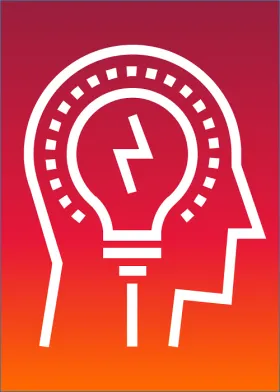Nearly every organization in the world, from state and local governments to multi-national corporations, is executing or planning its hybrid cloud or multi-cloud journey. As part of this endeavor, many business and IT leaders look at the future state complexity and envision legitimate concerns.
The future of an organization’s assets, applications, and data may well reside in a business-owned data center, a colocation facility, multiple public cloud providers, or numerous software as a service (SaaS) providers. This hybrid cloud ecosystem is not a worst-case scenario. Complex adoption strategies have the potential to be an optimal solution if planned and executed correctly.
Hybrid cloud journey FAQs
As this journey progresses, the following questions come up routinely:
- How are we going to track costs?
- How do we monitor uptime and performance?
- How do we secure this diverse ecosystem?
To answer these questions, the individuals tasked with the problem rely on their experience, resulting in the transformation leadership’s mindset remaining in a legacy approach. They view the new world as if it is simply an expansion of the data center operations they have run for 20 or more years. Deploy a comprehensive toolset that spans everything, and now you have unified visibility into the entire ecosystem. Thus, begins the hunt for the mythical “single pane of glass” that will solve all of their problems.
Top 3 things to keep track of in a hybrid cloud system
- Monitoring
- Billing and chargeback
- Security and compliance
Monitoring: how to address monitoring your application portfolio in a hybrid cloud deployment model
Many tools advertise the capabilities to monitor across data center operations, including on-premises, hyperscalers, and SaaS providers. Where these types of solutions usually fall short are the intricacies of the hosting platform. If uptime, ping, or basic counters are all that you are after, these solutions can solve the problem; however, many teams and businesses need more than that to remain viable today.
Container-aware monitoring, real-time response times, and end-user experience quality are some of the things that take an application from “available” to consumable. In addition to advanced monitoring capabilities, the application and business teams are going to be developing and deploying an increasing number of low-code or no-code solutions. There is no longer a server to ping or get CPU and memory utilization from. Monitoring data has to be tailored to the deployment model, and that will likely require customization and flexibility, as well as new tools and data sources.
After you have settled on a deployment-based approach to monitoring your hybrid cloud, the resulting data must be aggregated somewhere. That is where solutions like Elasticsearch, data lakes, and other open-source tools like Grafana can be beneficial - but that is not a single pane of glass; it is a fully integrated monitoring architecture that is built to support the application needs of your organization.
Billing and chargeback/show-back: how to understand and properly account for all of the spend
There are a number of tools that pull in vCenter usage data and combine that with Azure and AWS consumption. You can build out the rules and label every subscription and every resource to properly show compute and storage costs associated by team, application, business unit, or whatever segmentation suits your needs. This approach provides a directionally accurate representation of the spend.
If true cost accountability is required, that is just not possible in one tool - there is far too much complexity in a hybrid cloud adoption model to bring in every piece of data. For those teams that feel they have solved this problem, I would ask the following questions:
- How are you addressing the costs of data egress in your public cloud providers?
- How are you managing the costs of data retention and ensuring that data retention policies are correctly implemented throughout the ecosystem?
- How are you providing apples-to-apples cost comparisons to prove the business case for moving to a SaaS provider?
These questions are not intended to belittle the efforts of finance and IT teams but instead are there to reflect on the challenges of truly capturing itemized costs of a hybrid cloud model. Tackling those challenges will require diligence and understanding of where to compromise on the task of itemizing cost accountability. There is no single silver bullet that a tool can bring to solve this.
Security and compliance: advancements in potential threats have resulted in an ever-increasing toolset for protection
Much like monitoring, a comprehensive security approach ultimately results in the full integration of numerous tools that are tailored to the environments they are designed to protect. Applications running within Azure functions are secured in a dramatically different manner than virtual machines running in a data center. Bringing all of the data into a comprehensive SIEM and SOAR is a good start, but that fails to address the entirety of your security posture.
One example is audit compliance and vulnerability management must be top of mind and require separate capabilities within your toolsets. Additionally, given the sophistication of the threats in today’s world, it would be unwise to rely fully on one tool for all of your hybrid cloud’s security needs. In the event that tool gets compromised, you lose visibility into your environments and put yourself in harm’s way.
CGI’s panes of glass approach to the hybrid cloud
Our approach to a hybrid cloud single pane of glass solution has evolved over the years. Instead of finding the miracle cure, take a comprehensive look at what you are trying to achieve. Pick the right tools to solve the problems you have and integrate them in a way that fits the needs of your organization.
Tools are evolving at such a rate that you must be willing to change them to improve your performance, optimize your cost, and manage your security risks. Proper integrations and well-designed architectures will enable your team to better leverage what the future brings and provide you value today.
Is your organization on the journey to the cloud? Connect with our team to gain insights into your cloud readiness, highlight where you’re excelling, and understand where you may be stuck.





